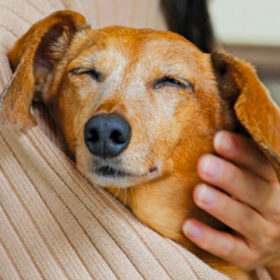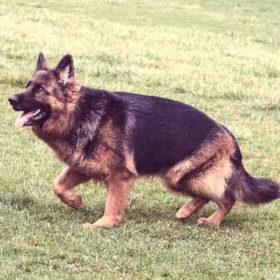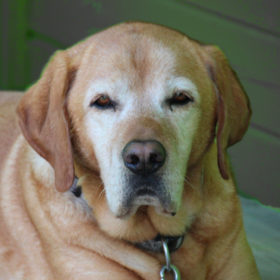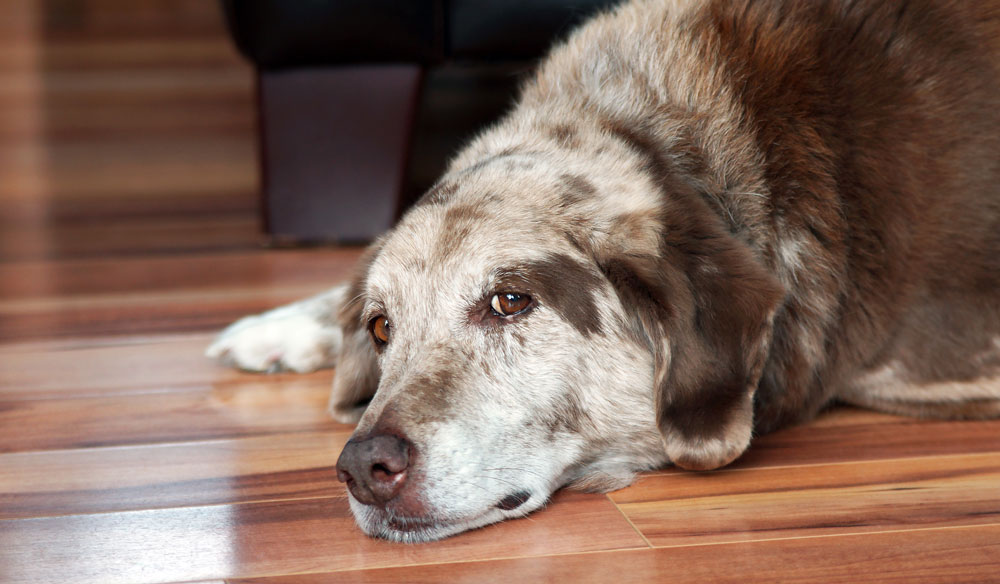Big dogs and their big hearts make such wonderful pets! From snuggly St. Bernards to Great Danes that think they are lap dogs, big dogs make some of the best companions. While we wish that all of our pets would live forever and never have any problems, it’s good to educate yourself on some of the more common ailments that may impact your larger than life dog. Large to giant dog breeds most often experience some type of joint issue sometime in their life. While these conditions are sometimes developed after years of playing, they can also be a hereditary condition to be managed.
Common Issues
Arthritis

Osteoarthritis

Hip/Elbow Dysplasia

What to Look For
Joint pain in big dogs reflects some of the most common issues found in these pets. Knowing what to look out for can help owners get ahead of the discomfort and in some cases even prevent the issue. Many of these joint problems will share symptoms with each other.
Limping
A dog can limp for many reasons but it is often the first visual sign that something may be wrong. Limping can be tough to catch sometimes, because when the stiffness alleviates your pup may look good as new. Look for patterns or long periods of time with limping.
Reluctance to Move
As dogs age and slow down a reluctance to move may be a bit more difficult to recognize. That being said, noticing a reluctance to walk, play, or jump is a strong indication that there is pain happening with those actions. For example, maybe your pup isn’t jumping up on to the bed as often, or you’ve noticed them struggling when they do. This might be an early sign of discomfort. Even just not greeting their owners at the door can be a cause for concern.
Licking/Chewing
An irritated, bored, or generally uncomfortable dog may adopt traits more often seen in puppies such as excessive licking and chewing. Many dog owners know this is usually a sign of anxiety or physical irritation, and it could be your dog trying to tell you that they are in pain.
Behavioral Changes
A sweet friendly dog, when in pain, can become much more aggressive and reserved. This may be with people or other pets, but any sudden changes in behavior should be taken seriously as it is common for pets to act out when experiencing a serious ailment. Keep an eye out on other pets in the home, if the temperament of the sick or hurting dog is off the other pets may be reacting aggressively as well.
Tiredness/Weakness
Noticing a physical change in muscle mass or excessive tiredness in your pet is a clear indicator of an issue. Loss of muscle will likely appear in the afflicted limb and can often accompany limping. It’s also not unusual for a dog’s body to compensate by gaining muscle in the leg that’s not affected, so key an eye out for that as well.
How to Help
It’s the reality of large dog breeds that they often develop or are born with joint problems. The good news is that their life will still be amazing! It’s just about making it as easy as possible for your pet to enjoy the entirety of their life. The best news is that thereare some great options to help them as they age into some of these joint problems, and that not all require medical intervention.
Ramps
- Ramps relieve the need to jump or climb. The gentle, continuous slope of ramps can help your pet access everything as normal without the pain.
- Can be used for cars, beds, couches, pools, and so much more.
Excercise/Physical Therapy
- Your large friend may enjoy swimming over walking or running on hard ground.
- Not all big/giant breeds should be exercised like other dogs. A Great Dane is not going to be able to jump around as much as a Lab can. Tailor playing and moving around to the capabilities of your specific breed.
- Bring your pet to a physical therapist when out of ideas for exercise. They will work through exercise and massages that will strengthen and soothe the painful areas.
Vet Intervention
- In the more extreme cases, surgery can become a helpful option.
- A vet may prescribe a diet change to alleviate some extra weight off the joints or to help prevent issues developing for younger pups.
- Ensuring any injuries are healed completely before your big lug gets back out to playing again can help avoid the likelihood of developing a recurring/long lasting issue.
Still the Same Lovable Pup!
These issues should NOT discourage anyone from bringing home a giant ball of love. While thinking about a pet being in pain is sad, it is not always the case. Just like we manage what life throws at us, our pets hope that we will do the same thing for them. Staying informed on how best to handle these situations is the first line of defense against bigger and scarier ailments. Managing a health problem quickly and calmly keeps everyone on the path to the best life possible.



